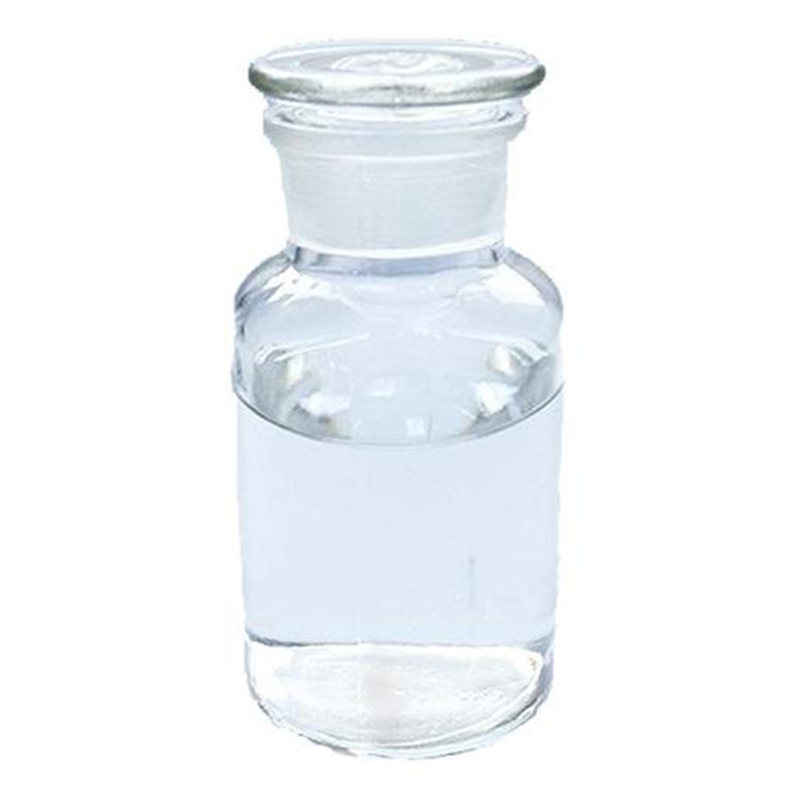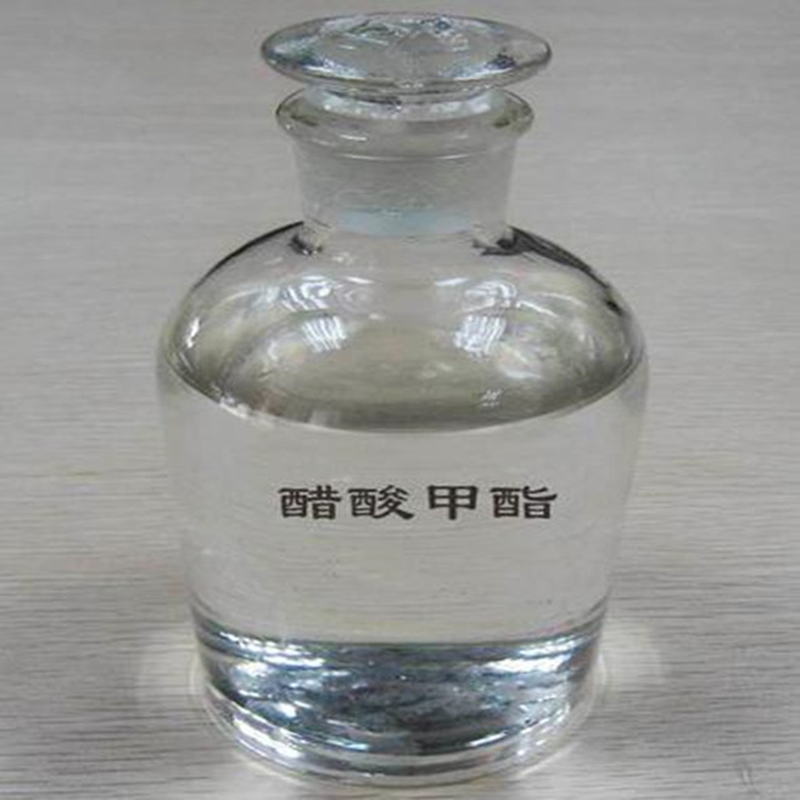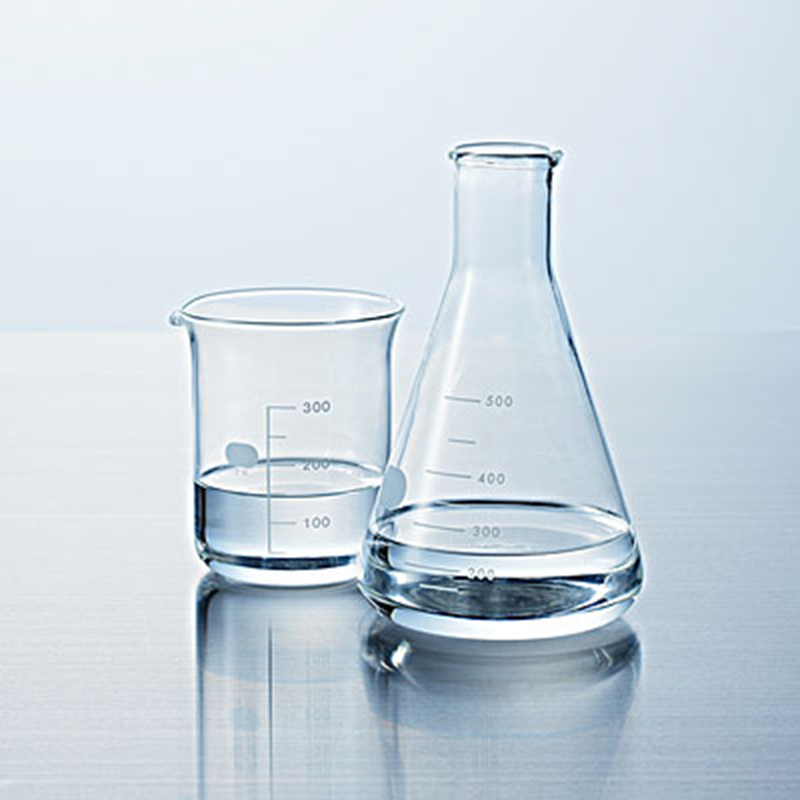
Phosphorus oxychloride
Key words:
Phosphorus oxychloride
Classification:
- Details
-
phosphorus oxychloride
Phosphorus oxychloride is also known as phosphoryl chloride and phosphorus oxychloride. Molecular formula POCl3. Molecular weight 153.33. Colorless and transparent fuming liquid. Melting point 2 ℃, boiling point 105.3 ℃. Relative density 1.675. Easily volatile, with a strong irritating odor. Exposed to humid air, hydrolyzed into phosphoric acid and hydrogen chloride, white smoke occurs. Easily decomposed by water and ethanol, and emits a lot of heat and hydrogen chloride. Strong corrosive.
Phosphorus oxychloride is an important chemical raw material. It is a colorless and transparent fuming liquid. It is widely used in the production of pesticides, medicines, dyes, phosphate esters and flame retardants. It is also used in the production of plastic plasticizers, chlorination reactions of long-acting sulfonamides, intermediates for the production of dyes, chlorinating agents and catalysts for organic synthesis, and extractants for uranium ore.
purpose
It is used to prepare phosphate esters such as diphenyl-isooctyl phosphate, triethyl phosphate, plastic plasticizers, organophosphorus pesticides, long-acting sulfonamide drugs, etc. It can also be used as dye intermediates, chlorination agents and catalysts for organic synthesis, and flame retardants. The use of electronic grade phosphorus oxychloride can also be used to prepare phosphate esters from liquid phosphorus sources such as integrated circuits, separation devices, and light preforms in the solar energy industry. It is mainly used for N-type doping sources in the semiconductor industry, and the reaction effect is best at 0 ° C.
emergency response
Skin Contact: Immediately remove contaminated clothing and rinse with plenty of running water for at least 15 minutes. seek medical attention.
Eye Contact: Immediately lift the eyelids and rinse thoroughly with plenty of running water or normal saline for at least 15 minutes. seek medical attention.
Inhalation: Quickly leave the scene to a place with fresh air. Keep the airway unobstructed. If breathing difficulties, give oxygen. If breathing stops, give artificial respiration immediately. Seek medical attention.
Ingestion: Gargle with water, gastric lavage for those without corrosive symptoms. Avoid taking oils. seek medical attention.
Respiratory protection: When you may be exposed to its vapors, you must wear a self-priming filter gas mask (full mask) or an isolated respirator. It is recommended to wear an air respirator during emergency rescue or evacuation.
Eye protection: Respiratory protection has been protected.
Body protection: wear rubber acid and alkali resistant clothing.
Hand protection: Wear rubber acid and alkali resistant gloves.
Other protection: No smoking, eating and drinking at the work site. After work, shower and change clothes. Store clothes contaminated with poisons separately and spare them after washing. Maintain good hygiene habits.
Emergency treatment of leaks: Quickly evacuate personnel from the leaked contaminated area to a safe area, and immediately isolate 150m, strictly restricting access. It is recommended that emergency personnel wear self-contained positive pressure breathing apparatus and anti-acid and alkali work clothes. Do not directly contact leaks. Cut off the source of leaks as much as possible. Small leaks: Absorb with sand, vermiculite or other inert materials. Large leaks: Build embankments or dig pits for containment. Remove under expert guidance.
Harmful combustion products: hydrogen chloride, phosphorus oxide, phosphane.
Extinguishing method: Extinguishing agent: dry powder, dry sand. Water is prohibited.
Management method
Management of the operation: closed operation, pay attention to ventilation. The operation is mechanized and automated as much as possible. Operators must be specially trained and strictly abide by the operating procedures. It is recommended that operators wear self-priming filter gas masks (full face masks), rubber acid and alkali resistant clothing, and rubber acid and alkali resistant gloves. Avoid generating fumes. Prevent the release of fumes and vapors into the air of the workplace. Avoid contact with reducing agents, active metal powders, and alcohols. Special attention should be paid to avoid contact with water. When handling, it should be handled lightly and lightly to prevent damage to packaging and containers. Equipped with leakage emergency treatment equipment. Empty containers may have harmful substances left behind.
Storage management: Store in a cool, dry and well-ventilated warehouse. Keep away from fire and heat sources. The storage temperature should not exceed 25 ° C and the relative humidity should not exceed 75%. The packaging must be sealed and should not be damp. It should be stored separately from reducing agents, active metal powders, alcohols, etc., and should not be mixed. The storage area should be equipped with leakage emergency treatment equipment and suitable containment materials.
Management of transportation: When transporting by railway, it should be assembled in strict accordance with the dangerous goods assembly table in the "Rules for the Transport of Dangerous Goods" of the Ministry of Railways. The packaging should be complete and the loading should be safe when shipping. During transportation, it is necessary to ensure that the container does not leak, collapse, fall or damage. It is strictly forbidden to mix and transport with reducing agents, active metal powders, alcohols, edible chemicals, etc. The transportation vehicle should be equipped with leakage emergency treatment equipment. During transportation, it should be protected from sun exposure, rain and high temperature. When transporting by road, it should be driven according to the prescribed route, and do not stop in residential areas and densely populated areas.
Waste management: refer to relevant national and local regulations before disposal. Pour into sodium bicarbonate solution, spray with ammonia water, and add crushed ice at the same time. After the reaction stops, flush it into the wastewater system with water.
Diagnostic points
(1) Respiratory system: After 2-6 hours of incubation period after inhalation, dry throat, sore throat, cough, chest tightness, shortness of breath, breathing difficulties can occur, and in severe cases, bronchitis, bronchitis, pneumonia, pulmonary edema, and even acute respiratory distress syndrome (ARDS).
(2) Digestive system: nausea, vomiting, abdominal pain, hepatomegaly and abnormal liver function may occur.
(3) Eye: There may be eye pain, tears, eye edema, eyelid spasm, conjunctival congestion, corneal opacity, etc.
(4) Skin: can produce burns, local erythema, blisters, etc.
(5) Others: headache, dizziness, weakness, cyanosis, convulsions, unstable gait, pelvic blood, severe kidney damage, heart failure, myocarditis, etc. There are also reports of enamel loss, bleeding gums and swelling.
Treatment principle
(1) Mainly to get away from the scene, keep the respiratory tract unobstructed, and give oxygen. Early, adequate, and short-term use of adrenal glucocorticoids to prevent and control pulmonary edema. Use high-dose antibiotics to control secondary infections. Symptomatic treatment such as antispasticity, sedation, and cough relief was given.
(2) When the skin is polluted, it should be adsorbed with paper or cotton first, and then wet compress with 2% sodium bicarbonate. Wound exposure therapy can also be used, but ointment or fatty dressings should not be used. After burning the skin and scabbing, the scab should be cut and debridged or the scab should be grafted as soon as possible, which can not only prevent phosphorus absorption, but also avoid wound infection.
(3) When the eye burns, it should be fully rinsed as soon as possible (2% boric acid) and infection prevention (topical application of antibiotic eye ointment or eye drops). Subconjunctival self-blood injection therapy, pupil dilation, antibiotic flushing, etc. can also be used.
(4) Pay attention to protect the functions of important organs.
Phosphorus oxychloride is an industrial chemical raw material, which is a colorless and transparent fuming liquid. The mechanism of poisoning is that the hydrolysis of phosphorus oxychloride produces phosphoric acid and hydrochloric acid (aqueous hydrogen chloride solution). Under normal circumstances, hydrogen chloride has a stimulating and burning effect on the skin and mucous membranes, and in severe cases, it can cause congestion, edema and even necrosis; massive inhalation can cause pulmonary edema, resulting in ventilation dysfunction, and clinical symptoms such as chest tightness, shortness of breath, and breathing difficulties.
Leave A Message
More Products





